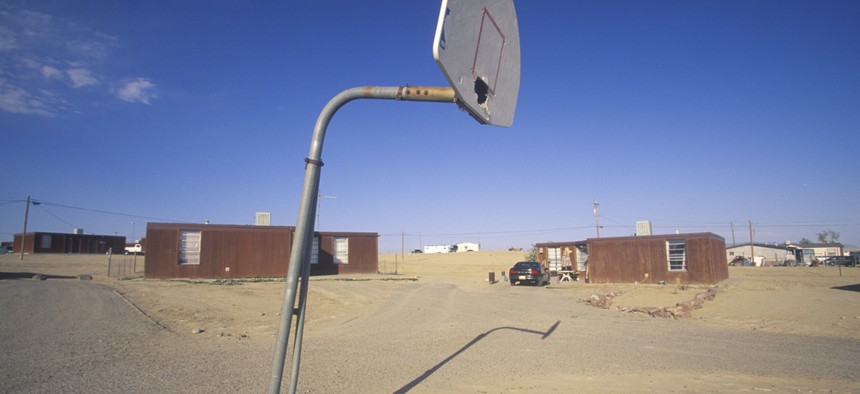
American Spirit/Shutterstock.com
The Federal Government Doesn’t Have a Good Way of Determining Who's Poor
The federal poverty threshold has been widely criticized as being outdated and flawed
In New York City—the most expensive city in the US—a two-adult, two-child family is considered poor if it earns less than $30,949 a year. The federal government sets the level at about $23,000.
The federal poverty threshold, which was developed over five decades ago and is based on what the estimated food costs were for a family at that time, has been widely criticized as being outdated and flawed. Meanwhile, the New York City poverty number, which is calculated by the City’s Center for Economic Opportunity, takes into account all of a family’s expenses, including housing and resources such as government benefits. While the New York poverty number is a closer reflection of how people live, it’s still not the most accurate measurement.
The average rent in most boroughs is about $3,000 and the average home price is north of $1 million—household incomes in the $20,000-$30,000 range are outpriced by a large margin.
For exactly this reason, cookie-cutter standards don’t accurately measure how low- and middle-income individuals and families are truly living and what they need to earn in order to make ends meet.
Enter the Self-Sufficiency Standard. Developed by the Center for Women’s Welfare, the standard examines the income necessary for families to afford basic needs—such as food, shelter, clothing and transportation—in various cities and states without public assistance. It identifies what it takes for a family to simply survive, not thrive. This means no family outings or vacations, no dining out at restaurants, no stopping for coffee on the way to work. The bare bones.
Recently, we released the 2014 Self-Sufficiency Standard for New York, which found that 42% of New York City households do not meet this standard. That translates to two out of five working households, or roughly 2.7 million men, women and children who lack the income to afford life’s necessities.
To put this in perspective, the standard shows that a family with two parents and two school-aged children living in Queens would need an annual income of $69,825 to make ends meet without the use of any public or private supports. If those children were preschool-aged, the family would require a higher income of $81,645 in order to afford child care. That is a far cry from $23,000, the federal poverty level, which is why the Federal Poverty Guidelines do not paint a comprehensive picture of “living poorly” in New York City and many other regions in this country.
To be economically independent in New York City is extremely nuanced. Where a family lives (lower Manhattan versus the Bronx), how many people are in the family, and the number and ages of children influence living costs dramatically. The Federal Poverty Guidelines, in contrast, apply the same income thresholds regardless of whether a family is living in Kentucky or Buffalo.
By accounting for these differences, the Self-Sufficiency Standard provides a more comprehensive picture of poverty than other measures. Specifically, the standard looks at a few important characteristics that others don’t:
- All major budget items faced by working adults (ages 18-64). The standard looks beyond housing and food to include items such as healthcare and taxes, and it also allows different costs to increase at different inflation rates and does not assume that any one cost will always be a fixed percentage of the budget.
- Changes in workforce participation over the past several decades, particularly among women. The standard assumes that working adults need work-related expenses such as transportation and child care. Other measures tend to use an outdated demographic model of mostly two-parent families with a stay-at-home mother.
- Geographic variations in cost of living. The standard examines costs down to the county level. Most other measures look at the continental United States.
So what does all of this mean for the state of poverty in this country? It forces us to rethink what it means to be poor, how we are measuring it, and how we should be talking about it.
This is not only a story of the “haves” and “have nots,” but one that includes millions of people living in the widening gap in the middle. Oftentimes, these are people who earn too much to qualify for SNAP benefits (formerly known as food stamps) or Medicaid or public housing, but they earn too little to comfortably and consistently put food on the table every day. These are people who put in a 40-hour work week or more, but have to rely on food pantries and soup kitchens to feed their children.
In a country and city of plenty, we know there is a better way. By moving beyond the Federal Poverty Threshold and using a different measure, we can help shift the conversation and policy directives from addressing poverty to addressing economic self-sufficiency.
(Top image via American Spirit / Shutterstock.com
NEXT STORY: How I Lead: Valuing Each Person’s Input






